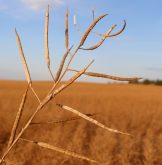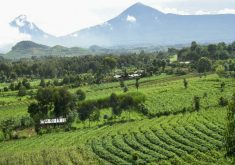Plants may live rooted in one place, but the more scientists learn about plants, the more complex and responsive we realize they are. Plants are specialists, making the most of what is near where they germinate.
Learning about the intricacies of plant life is about more than inspiring wonder in people, though. Studying plants is also about making sure we can still grow crops in the future as climate change makes our weather increasingly extreme.
Environmental signals shape the growth and development of plants. See, for example, how many plants use day length as the cue to trigger flowering. Likewise, roots also use signs from their surroundings to ensure their shape is optimized to forage for water and nutrients.
Read Also

Why agriculture is Canada’s energy ace
Why isn’t agriculture getting more play in Canada’s quest for efficient, renewable energy production? It should be
Roots protect their plants from stresses such as drought by adapting their shape (branching to increase their surface area, for example) to find more water. But until recently, we didn’t understand how roots sense whether water is available in the surrounding soil.
Water is the most important molecule on Earth. Too much or too little can destroy an ecosystem. The devastating impact of climate change is making floods and droughts more common. Since climate change is making rainfall patterns increasingly erratic, learning how plants respond to water shortage is vital for making crops more resilient.
Our team of plant and soil scientists and mathematicians recently discovered how plant roots adapt their shape to maximize water uptake. Roots normally branch horizontally. But they pause branching when they lose contact with water, such as growing through an air-filled gap in the soil. Roots only resume branching once they reconnect with moist soil.
Our team found that plants use a system called hydrosignalling to manage where roots branch in response to water availability in the soil.
Hydrosignalling does not involve measuring moisture levels directly, but senses other soluble molecules that move within plants with the water. This is only possible because plant cells are connected to one another by small pores.
These pores enable water and small soluble molecules, including hormones, to move together between root cells and tissues. When water is taken up by the plant root, it travels in through the outermost epidermal cells.
The outer root cells also contain a hormone that promotes branching, called auxin. Water uptake triggers branching by mobilizing auxin inward to inner root tissues.
But when water is no longer available externally, like when a root grows through an air-filled gap, the root tip still needs water to grow. When roots can’t take in water from the soil, they have to rely on the supply in their own veins deep inside the root. This changes the direction of water movement, making it now move outward. This disrupts the flow of the branching hormone auxin.
The plant also makes an anti-branching hormone called ABA in its root veins. ABA moves with the flow of water, in the opposite direction to auxin. So, when the roots draw on water from the plants’ veins, the roots are also drawing the anti-branching hormone toward themselves.
ABA stops root branching by closing all the small pores that connect root cells – a bit like blast doors on a ship. This seals off root cells from each other and stops auxin freely moving with water, blocking root branching. This simple system allows plant roots to fine tune their shape to local water conditions. It’s called xerobranching.
Our study also found that a plant’s roots use a similar system to reduce water loss.
Above the ground, leaves stop water loss during drought conditions by closing micro-pores called stomata on their surfaces. Stomata closure is also triggered by the ABA hormone. In roots, ABA reduces water loss by closing nano-pores called plasmodesmata that link every root cell together.
Roots from tomato, maize, wheat and barley all respond to moisture in this way, despite evolving in different soils and climates. This suggests xerobranching is a common trait in flowering plants.
In contrast, ferns, a non-flowering, earlier-evolving land plant species, don’t respond to water in this way. Their roots grow more uniformly. This suggests flowering species are better at adapting to water stress than older land plants.
Given the rapid changes in rainfall patterns across the globe, the ability of plants to sense and adapt to a wide range of soil moisture conditions is more important than ever.
– Malcolm Bennett and Poonam Mehra are researchers with the University of Nottingham. Their article was originally published via The Conversation, by Reuters.















